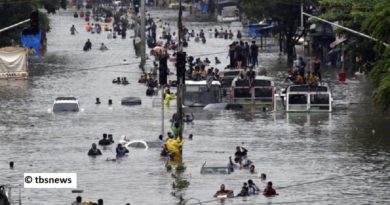European Union improves its resilience against risks
Presentation
The European Union Civil Protection Mechanism was created in 2001. The idea is to provide assistance to a state (potentially a non-EU member) requesting help after a crisis. This system is based on a voluntary basis within the European Union [1]. The member states thus make available resources, manpower or logistical support and are directed by the European Commission [6]. Since then, this system has widely demonstrated its usefulness in many major crises such as in the Ebola epidemic in West Africa (2014) [5].
Actions
The civil protection system takes care of real-time interventions in the field. But this is not the only field of action of this organization. It also offers a non-negligible information support to ongoing operations, based on satellite data (Copernicus) [5].

In addition to these recovery services, a training program has been developed between civil protection experts and the various requesters of this service. There is a willingness to improve the resilience of states based on international collaboration. In fact, the challenge is to improve prevention, preparedness and response to the various crises that states may encounter in the future [2]. Thanks to exchanges between national civil protection authorities, universities and researchers, training in risk management can be improved [4]. Meanwhile, a European civil protection knowledge network has been set up. This is a new platform for knowledge sharing which will make available the best practices and lessons learned by civil protection experts and emergency management personnel [2]. The EU network of experts is permanently based in 40 countries on all continents [3].
Improvement
In view of the results provided by this system and its success, a motion was adopted by the European Parliament to increase the common resources available to the EU [1]. As many countries face the same dangers during the same periods, a new reserve of resources (called the ‘rescEU reserve’) was implemented. It includes an improved system for the distribution of equipment, fire-fighting equipment and first aid material, which will be available independently of the pre-existing volunteer base. From a financial point of view, the budget allocated between 2021 and 2027 to the civil protection could be increased by 1.4 billion euros [5].
References
[1] Agence France Presse 2019. « L’UE accroît sa capacité de réaction aux catastrophes naturelles », publié le 12.02.2019, Strasbourg, France.
[2] Featured Image of the article: Hans. Illustrations of the article « Coronavirus: 4 New Member States Join the RescEU Medical Reserve ». Text. European Civil Protection and Humanitarian Aid Operations – European Commission, 22 septembre 2020. https://ec.europa.eu/echo/news/coronavirus-4-new-member-states-join-resceu-medical-reserve_en
[3] Hans. « Gestion européenne des risques de catastrophe ». Text. Protection Civile et Operations d’Aide Humanitaire Européennes – European Commission, 26 novembre 2020. https://ec.europa.eu/echo/what/civil-protection/european-disaster-risk-management_fr.
[4] Hans « Lorsque sévissent des catastrophes, l’UE vient en aide ». Text. Protection Civile et Operations d’Aide Humanitaire Européennes – European Commission, 18 novembre 2019. https://ec.europa.eu/echo/emergenciescampaign_fr.
[5] Hans « rescEU ». Text. Protection Civile et Operations d’Aide Humanitaire Européennes – European Commission, 18 juillet 2019. https://ec.europa.eu/echo/what/civil-protection/resceu_fr.
[6] « « RescEU », mécanisme d’intervention renforcé en cas de catastrophe ». La Croix, 3 mai 2019. https://www.la-croix.com/Monde/Europe/RescEU-mecanisme-dintervention-renforce-cas-catastrophe-2019-05-03-1201019359.
[7] « RescEU-for-IRONORE-2020.pdf ». Consulté le 15 décembre 2020. https://www.ironore.eu/wp-content/uploads/2020/09/RescEU-for-IRONORE-2020.pdf.




